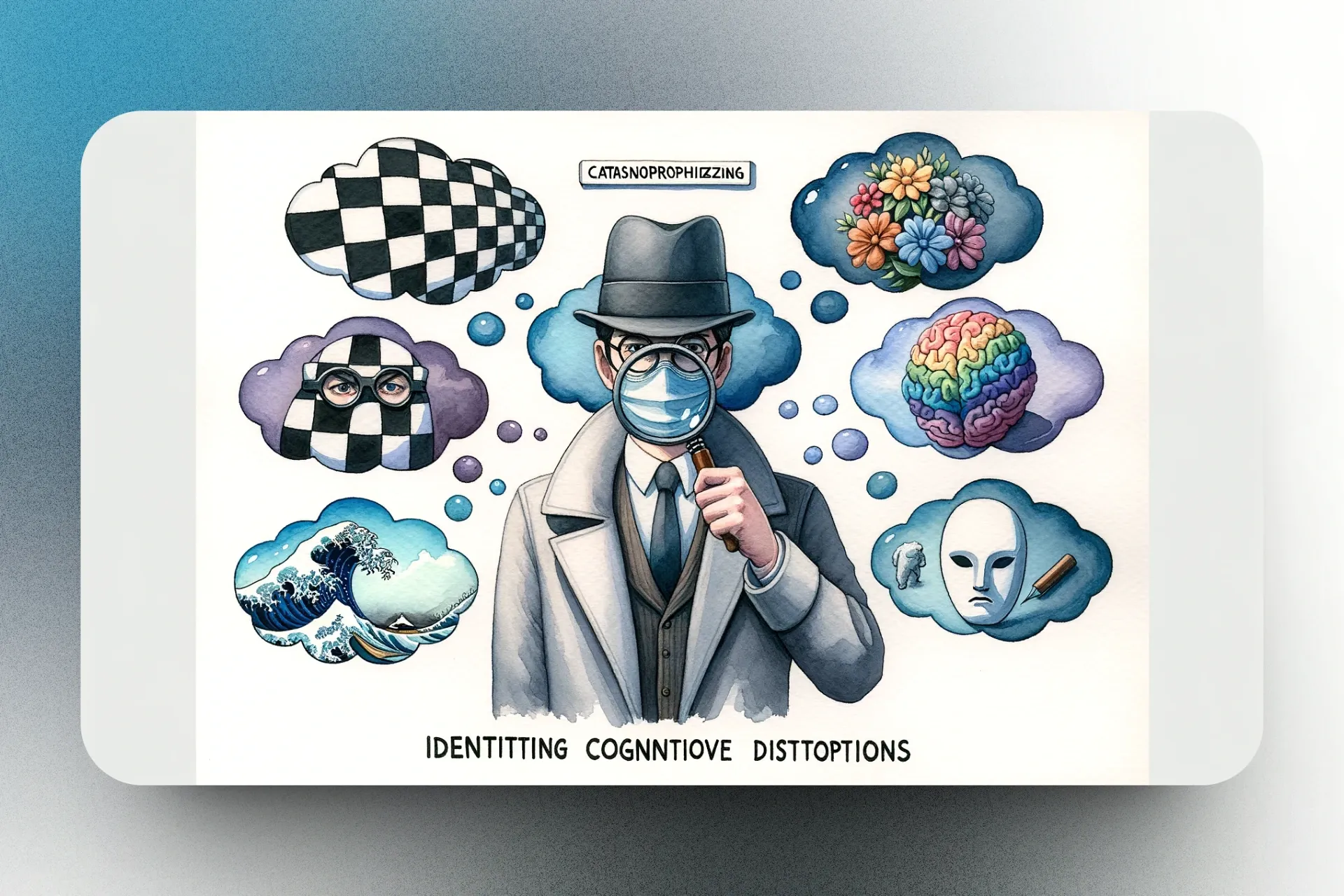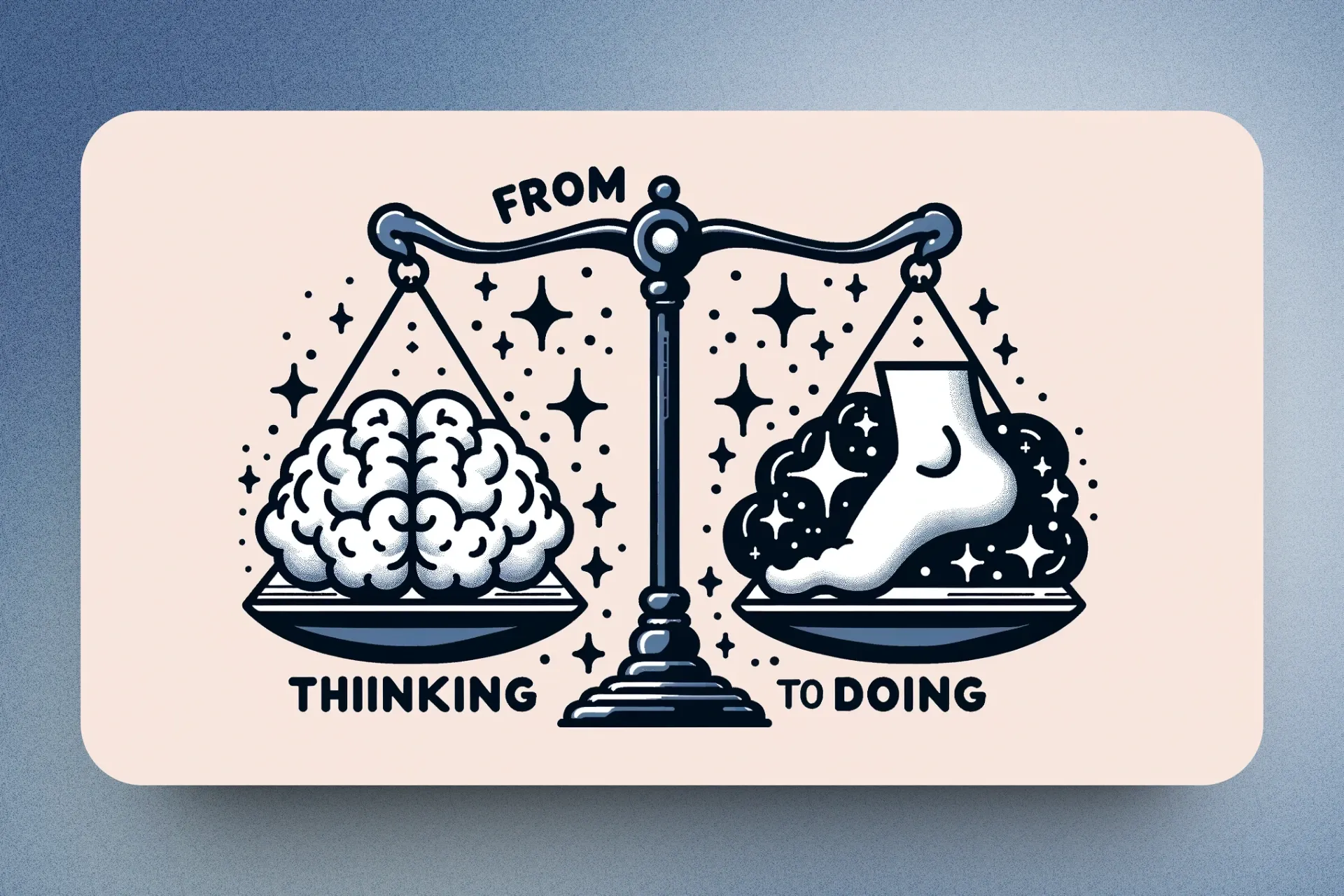The Art of Just Doing It: How to Stop the Vicious Cycle of Overthinking

We've all been there - stuck in our heads, overanalyzing every potential outcome, unable to take action. The hamster wheel of rumination spins endlessly as we waste time and energy thinking rather than doing. For chronic overthinkers, this tendency can be paralyzing. So how do we break free?
In this post, I'll share insights from my own journey learning to take action instead of overthinking. You'll learn:
- Why overthinking is an addiction we need to break
- How to identify unhelpful thought patterns holding you back
- A simple mindset shift to overcome analysis paralysis
- Tools to train yourself into a bias for action
Let's dive in!
The Seductive Appeal of Overthinking
Why is it so hard to stop overthinking? In many ways, endless rumination can feel productive. We believe if we just think through every angle, we'll gain the certainty needed to act. But of course, true certainty is elusive. There's always some lingering doubt or unturned stone. And so we remain stuck in place as the hours tick by.
This tendency is particularly strong for those of us prone to anxiety. Our minds jump to the worst case, imagining vivid scenarios of failure. Of course we're hesitant to act - danger seems to lurk around every corner! Better to be safe than sorry, our brain tells us. But this leaves us paralyzed.
In reality, overthinking is an addiction. Our mind craves the stimulation of worrying and analyzing. Just like social media or junk food, rumination provides a little burst of satisfaction as we feel productive. But ultimately, it's holding us back just like any vice. To create change, we need to go on a mental detox.
Identifying Cognitive Distortions

The first step is learning to recognize unhelpful thought patterns. In cognitive behavioral therapy, these are called cognitive distortions - exaggerated or irrational ways of thinking that fuel anxiety, depression, and overthinking. Some common distortions include:
- Black-and-white thinking - Seeing in extremes with no middle ground. Either I'm a complete success or a total failure.
- Catastrophizing - Imagining the worst case scenario and treating it as if it's likely. What if I fail this project and my boss fires me?
- Emotional reasoning - Letting feelings define reality. I feel anxious about this, so it must be dangerous.
- Should statements - Making rigid rules for what we "should" do. I should have this all figured out already.
- Personalization - Believing everything relates to you. They didn't invite me because nobody likes me.
Learn to catch yourself when using these thought patterns. The first step in changing our thinking is awareness. Keep a journal and write down when you notice distorted thinking. Just this act of labeling thoughts as exaggerations or irrationalities helps dispel their power.
From Thinking to Doing

Once we've developed more awareness, it's time to shift from overthinking to action. This requires retraining our automatic thought patterns. One powerful technique is the "thought flipping" exercise.
The practice is simple but challenging. For a set period of time, you consciously reframe any thought in the most positive way you can. Something bad happens? That's good - it's helping me learn and grow! You feel tired? Great, it means my body is telling me to recharge!
It feels uncomfortable and even fake at first. But over time, you build new neural pathways in your brain for optimistic thinking. Patterns like catastrophizing or black-and-white thinking slowly weaken from disuse. You begin seeing possibilities instead of pitfalls.
Another mindset shift is accepting uncertainty and anxiety. Those with anxiety often overthink in hopes of feeling completely ready and gaining certainty before acting. But this backfires - we just ruminate more. If we accept that uncertainty and discomfort are part of any growth, it becomes easier to act in spite of doubt. Discomfort isn't a sign we should keep thinking - it's a sign we need to get going!
Building the Action Habit
Finally, we need to build the habit of action itself. Like any habit, this requires regular repetition. Allocate time for brainstorming and planning, but make sure it leads to concrete steps forward. Set a timer for rumination - when time's up, act.
Accountability helps too. Share your plans and commit to action steps publicly. Join a mastermind group or find an accountability partner. Social pressure drives us forward.
Most importantly, cut yourself some slack. You won't overcome a lifetime of overthinking overnight. But with consistent practice, the inertia that's held you back begins to fade. Progress requires patience.
In closing, I hope these tips help you shift from overanalysis to action. Here are some key takeaways:
- Recognize overthinking as an unhelpful habit you need to break. Don't buy into the feeling of productivity it provides.
- Learn to identify cognitive distortions like black-and-white thinking and catastrophizing so you can challenge them.
- Try thought flipping. Actively reframe thoughts in an optimistic way to build new neural pathways.
- Accept uncertainty. Discomfort doesn't mean you need to keep thinking - it means you need to act.
- Build systems of accountability. Enlist others to help motivate action.
- Have patience. Rewiring thought patterns takes regular practice over time.
The path from overthinking to doing isn't easy. But with a commitment to moving forward imperfectly, progress will come. Life is out there waiting - stop thinking and start living it!
What has helped you overcome chronic overthinking? Share your tips in the comments!




